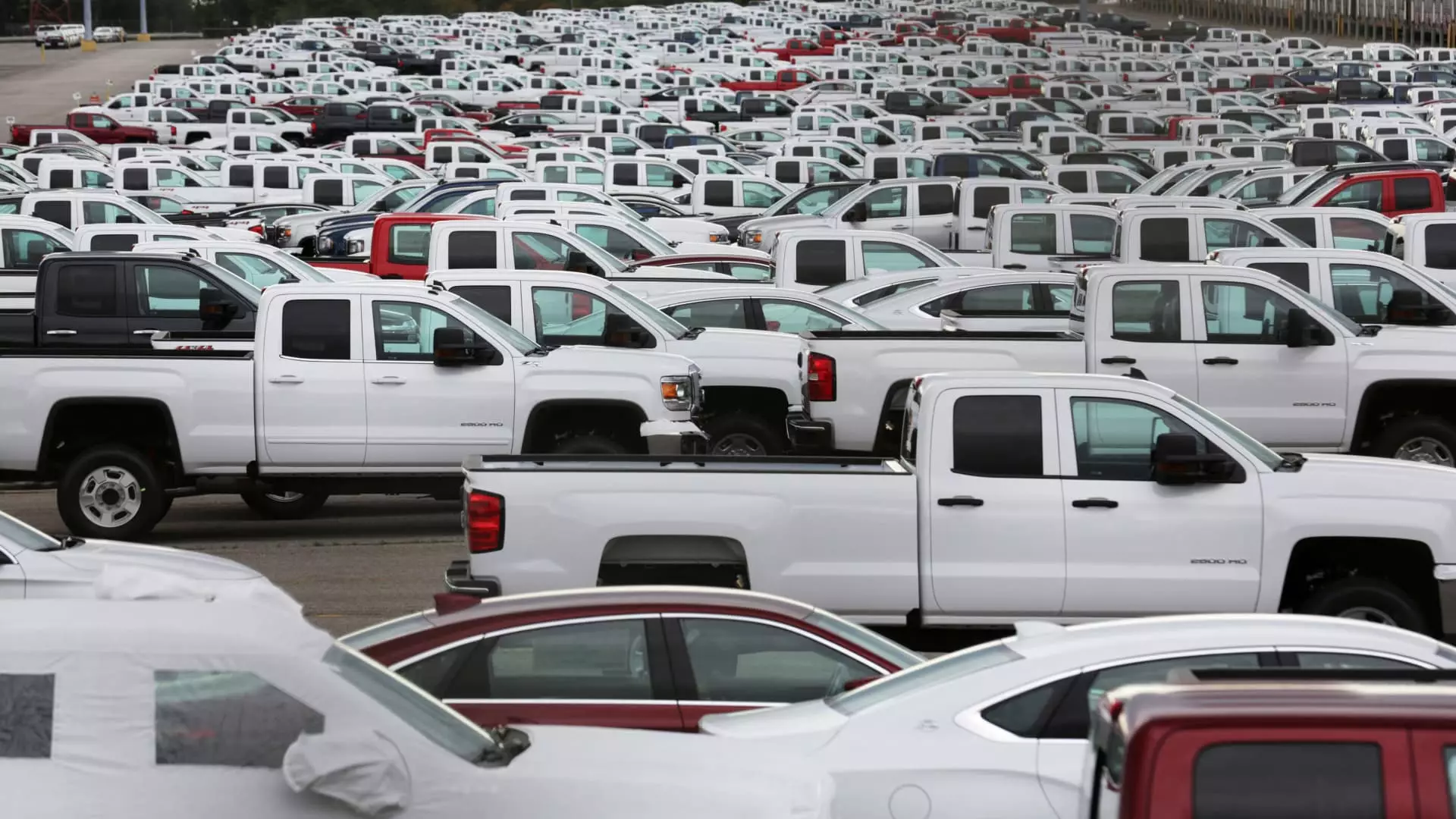The recent decision by the Trump administration to impose a 25% tariff on imported vehicles has sent shockwaves through the auto industry, particularly impacting General Motors (GM). The rapidly sinking stock prices of GM reveal the seriousness of the situation, highlighting systemic vulnerabilities within the company that warrant discussion. Unlike its competitors, Ford and Stellantis, which have shown greater resilience, GM’s heavy reliance on imports makes it particularly susceptible to these new tariffs.
The Weight of Imports: A Double-Edged Sword
General Motors finds itself in a precarious position due to its import strategy, especially concerning Mexico, which accounts for a staggering 16.2% of all vehicle imports into the U.S. As tariffs loom, it becomes increasingly clear that GM’s model of outsourcing vehicle assembly leaves it more exposed than its rivals. The overwhelming reliance on foreign production not only jeopardizes the financial standing of the company but also raises important questions about its strategic direction. Critics must ask whether GM’s leadership has been short-sighted in not prioritizing domestic production more aggressively.
On the other hand, companies like Ford and Stellantis have cultivated a more balanced portfolio when it comes to domestic versus international manufacturing locations. They have shown strength, with Ford assembling 78% of its vehicles in the U.S. This reliance on domestic assembly shields them from tariff repercussions, demonstrating that an offshoring strategy can be a double-edged sword. GM’s greater exposure signals a clear need for a reevaluation of its supply chain strategy. A narrow focus on cost-cutting through cheaper labor can lead to catastrophic vulnerabilities when geopolitical shifts occur, as we’ve witnessed through this tariff implementation.
Trump’s New Tariff Policy: Economic Warfare?
The announcement of these tariffs aligns with a broader nationalist sentiment that seeks to protect American manufacturing at all costs. While proponents argue that domestic manufacturing is crucial for job creation and economic growth, there are undeniable risks associated with such protectionism. At face value, the notion of supporting American jobs is commendable, yet one cannot help but scrutinize the broad economic implications.
By essentially ostracizing certain automakers from broader market operations based on where their vehicles are assembled, the government may inadvertently stifle competition and innovation. General Motors, which has invested heavily in electric vehicle technology, could fall behind if it’s forced into a corner financially due to tariffs. Such policies risk pushing American manufacturers back into an antiquated model that emphasizes heavy domestic production without encouraging global collaboration or efficiency.
The Ripple Effect on the Automotive Ecosystem
The consequences of the tariff imposition are bound to ripple throughout the entire automotive ecosystem. Automotive parts suppliers, many of whom operate at the edge of sustainability, could suffer under the weight of increased costs. The interconnected nature of the industry means that when one player struggles, others inevitably feel the pressure. Smaller manufacturers that supply GM may find it untenable to operate under inflated costs, leading to job losses and further economic destabilization.
Moreover, the urgency of the current climate crisis looms over the automotive industry. With talk of tariffs overshadowing discussions on sustainability, automakers must ensure they balance profits with eco-conscious efforts. The tariffs might force GM to reconsider its international strategies, which could, in the long term, delay investments in greener technology. As public opinion increasingly favors corporate responsibility towards the climate, GM’s short-term strategies related to tariff impacts could land it in a world of trouble.
Truckloads of Trouble for GM’s Future
As the automotive industry braces for the fallout from the latest tariffs, GM’s struggles serve as a cautionary tale. The company’s stock has plummeted by 6% in the wake of the announcement, a stark reminder of its vulnerabilities. Compounding this issue is the fact that 57% of Stellantis and 78% of Ford’s offerings come from domestic assembly, putting GM’s unsteady footing into sharp relief.
The coming months will be critical for GM. High-stakes decisions loom on how to pivot amidst rising tariffs and a shifting market landscape. As it stands, GM’s survival hinges on its ability to adapt rapidly—not just to economic pressures but also to the evolving needs of consumers who increasingly demand sustainable practices alongside economic viability. The trajectory ahead will be watched closely, and it remains to be seen whether GM can transform these challenges into opportunities or if they will further lose ground to more agile competitors.

